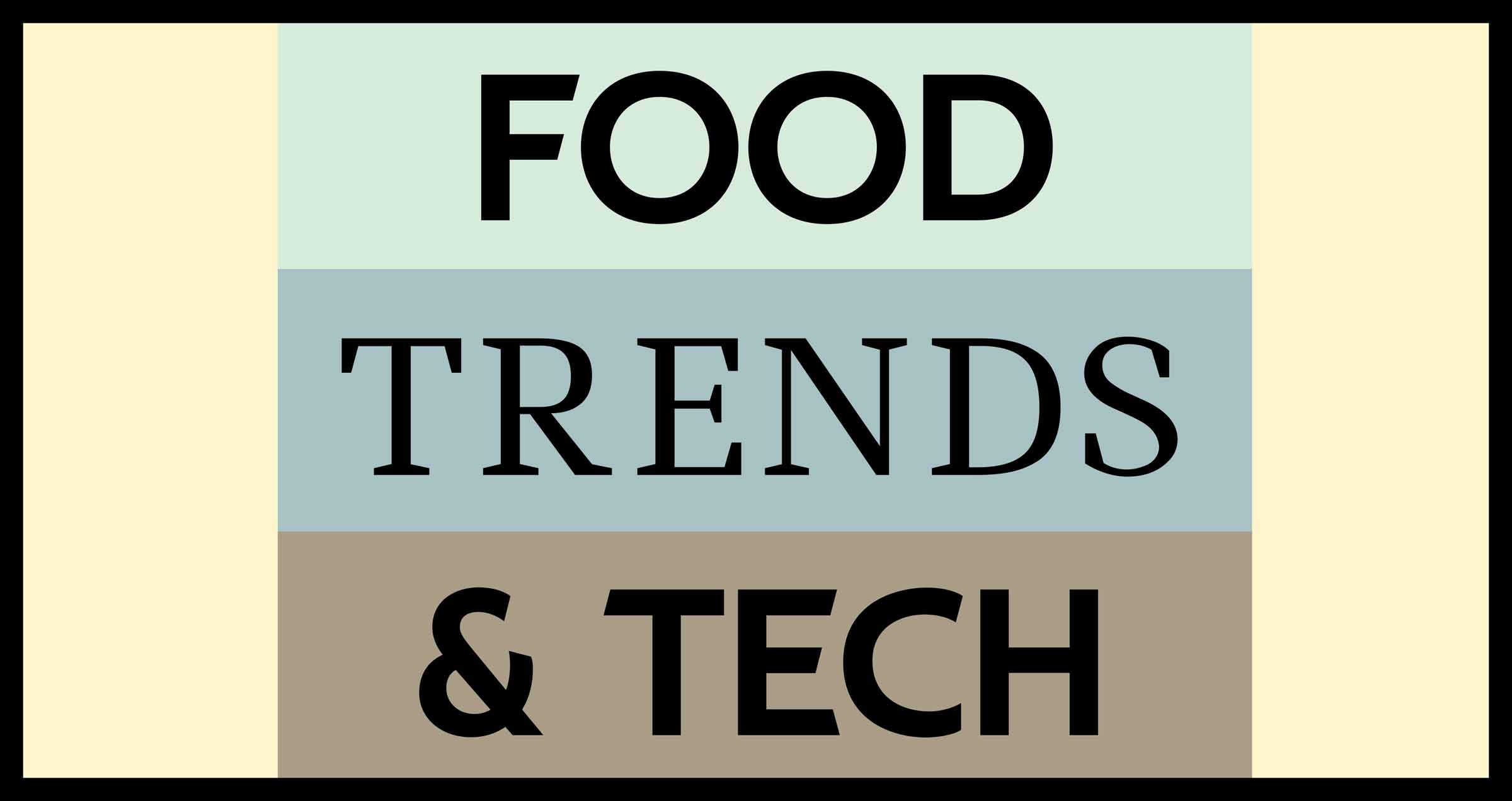El primer paso en un etiquetado limpio con saborizantes es entender la regulación. Una larga lista de compuestos que pueden denominarse “sabor natural” se proporciona en el Título 21 del Código de Regulaciones Federales (CFR), 101.22. Se incluyen el “aceite esencial, oleorresina, esencia o extractiva, hidrolizado de proteína, destilado, o cualquier producto del tostado, calefacción o enzimólisis, que contiene los constituyentes aromatizantes derivados de especias, fruta o zumo de fruta, verduras o zumos vegetales, levadura comestible, hierbas, cortezas, raíces, brotes, hojas o materia vegetal similar, carne, mariscos, aves, huevos, productos lácteos, o productos de fermentación de los mismos, cuya función significativa en los alimentos es aportar sabor en lugar de valor nutricional”.
Los saborizantes artificiales incluyen las sustancias enumeradas en 172.515 (b) y 182.60 del Capítulo 21, excepto cuando estos son derivados de fuentes naturales. “Básicamente”, explicó Gary Reineccius, Jefe del Departamento de Ciencia Alimentaria y Nutrición de la Universidad de Minnesota, “si no es natural, es artificial.”
El etiquetado y la denominación de los productos finales condimentados puede llegar a ser complicado y un poco subjetivo. Por ejemplo, el sabor natural añadido al relleno de una tarta de cereza, con suficientes ingredientes que la caracterizan (cerezas), se etiqueta como “tarta de cereza”, pero el sabor natural añadido a comida sin suficientes cerezas para dar sabor por sí mismas, se etiqueta como “tarta con sabor natural de cereza”. El sabor añadido ahora debe ser natural y similar al de la cereza.
En los alimentos que contienen ingredientes saborizantes artificiales que simulan, asemejan o refuerzan un sabor conocido o característico, se debe indicar en el etiquetado principal que contienen saborizantes artificiales. Para determinar si el sabor añadido simula, se asemeja, refuerza o no el aroma característico, la prueba principal es separar dicho sabor del producto. Por lo tanto, la vainillina añadida al chocolate no sería un aroma característico, ya que no sabe a chocolate.
“Zumo de cereza con benzaldehído añadido se consideraría con sabor artificial, porque el benzaldehído refuerza y extiende el sabor a cereza. La prueba no solo es si un sabor artificial simula o es químicamente idéntico al sabor natural característico, sino también – de manera más amplia – si lo asemeja, refuerza o simula “, dijo Reineccius. En el pudín de limón con citral y sin limón añadido para dar sabor, el producto podría ser etiquetado como “pudín de limón, con sabor artificial.” Si un sabor es natural y se deriva totalmente de fuentes distintas del producto cuyo sabor se simula, se etiqueta como ” con sabor artificial “o como” con otros sabores naturales “(WONF). Si otros sabores naturales son añadidos y el sabor que aporta el ingrediente no caracteriza por separado el sabor indicado, entonces la regulación establece que la etiqueta frontal debe indicar “pudín de limón con otros sabores naturales”, por ejemplo, y la lista de ingredientes deberá mencionar WONF.
Para etiquetar un producto con una mezcla de tres o más sabores característicos que puedan ser diferenciados, como los sabores naturales de cereza, naranja y uva, o una mezcla sin sabor primario reconocible, el saborizante puede ser denominado por un término genérico apropiadamente descriptivo, como sabor “ponche de frutas”. Dicho producto totalmente condimentado con compuestos artificiales podría ser etiquetado de la misma manera, pero la lista de ingredientes debe especificar saborizantes artificiales.
Al etiquetar los saborizantes contenidos en productos alimenticios, sus matrices de encapsulación, disolventes de sabor y conservantes son típicamente considerados aditivos incidentales, añadidos a un alimento como un componente de un ingrediente sin efecto técnico o funcional, y por lo tanto exentos de etiquetado de acuerdo con 21 CFR 101.100.
Reineccius señala que la afirmación “todo natural” para un producto que no es lo mismo que sabor natural. “Otra afirmación que se ve a menudo,” sin aditivos “, no se aplica a sustancias GRAS (Generalmente Reconocidas Como Seguras), que figuran en el CFR 1182.105 hasta 182.8997 y 184.1. Las sustancias GRAS no se consideran aditivos”, se esforzó por aclarar.
En conclusión, una oportunidad para una etiqueta clara a menudo significa sabor natural antes que sabor artificial, lo que normalmente añade un coste considerable. Las prácticas internas y la imagen corporativa entran en juego. La flexibilidad en el etiquetado y la interpretación en la caracterización o simulación del sabor varía en toda la industria. WONF se ignora con frecuencia.
Pie de Foto de Pastel de Cerezas: El sabor natural añadido al relleno de un pastel de cerezas, con suficientes ingredientes característicos (cerezas), se denomina “pastel de cerezas”. Sin embargo, el sabor natural agregado a los alimentos que no contienen suficientes cerezas para darle suficiente sabor al pastel se etiqueta como “pastel con sabor a cereza natural”.
Haga clic en las frases a continuación para ver artículos relacionados sobre estos temas en FoodTrendsNTech.com.
Clean and Friendly Flavors
English version from which the above article, Etiquetado Limpio con Saborizantes, was translated.
The first step in using clean and friendly flavors is understanding the regulations. A lengthy list of compounds termed “natural flavor” is provided in Title 21 Code of Federal Regulations (CFR) 101.22. They include the “essential oil, oleoresin, essence or extractive, protein hydrolysate, distillate, or any product of roasting, heating or enzymolysis, which contains the flavoring constituents derived from a spice, fruit or fruit juice, vegetable or vegetable juice, edible yeast, herb, bark, bud, root, leaf or similar plant material, meat, seafood, poultry, eggs, dairy products, or fermentation products thereof, whose significant function in food is flavoring rather than nutritional.” Artificial flavor includes the substances listed in 172.515(b) and 182.60 of Chapter 21, except those derived from natural sources. “Basically,” explained Gary Reineccius, Department Head of Food Science and Nutrition at the University of Minnesota, “if it is not natural, it is artificial.”
Labeling and naming flavored finished products can become complicated and a bit subjective. For example, natural flavor added to a cherry pie filling, with sufficient characterizing ingredients (cherries), is labeled “cherry pie.” However, natural flavor added to food with not enough cherries to sufficiently flavor the pie by itself is labeled “natural cherry-flavored pie.” The added flavor now must be natural and cherry-like.
Foods containing artificial flavoring materials that simulate, resemble, or reinforce a named or characterizing flavor must be labeled as containing artificial flavoring on the principal display panel. In determining whether added flavor does or does not simulate, resemble, or reinforce the characterizing flavor, the principal test is to separate such added flavor from the product. Thus, vanillin added to chocolate would not be a characterizing flavor because it does not taste like chocolate.
“Benzaldehyde added to cherry juice would be considered artificially flavored because benzaldehyde reinforces and extends the cherry taste. The test is not solely whether an artificial flavor simulates or is chemically identical to the characterizing natural flavor, but also—more broadly—whether it resembles, reinforces or simulates it,” said Reineccius.
In lemon pudding with citral and no lemon added for flavoring, the product would be labeled “lemon pudding, artificially flavored.” If a flavor is natural and is derived totally from sources other than the product whose flavor is simulated, it is either labeled “artificially flavored” or “with other natural flavors” (WONF). If other natural flavors are added and the flavor contributed by the ingredient does not separately characterize the named flavor, then the regulations state that the front panel must say “lemon pudding with other natural flavors,” for example, and the ingredient statement must list WONF.
To label a product with a blend of three or more distinguishable characterizing flavors, such as natural cherry, orange, and grape, or a blend with no primary recognizable flavor, the flavor may be declared by an appropriately descriptive generic term, such as “fruit punch” flavor. Such a product entirely flavored with artificial materials could be labeled similarly, but the ingredient statement must declare artificial flavors.
When labeling flavors contained in food products, their encapsulation matrices, flavor solvents, and preservatives are typically considered incidental additives added to food as a component of an ingredient with no technical or functional effect. Therefore, they are exempt from labeling according to 21 CFR 101.100.
Reineccius pointed out that the claim “all-natural” for a product is not the same as natural flavor. “Another claim often seen, ‘no additives,’ does not apply to GRAS substances, listed in CFR 1182.105 to 182.8997 and 184.1. GRAS substances are not considered additives,” he strived to clarify.
In conclusion, an opportunity for a clean label often means natural flavor over artificial flavor, which typically adds substantial cost. Internal practices and corporate image come into play. Flexibility in labeling and interpretation of flavor characterization or simulation varies industry-wide. WONF is frequently ignored.
Gary Reineccius, Ph.D., Professor and Department Head, Department of Food Science and Nutrition, University of Minnesota, speaking at the 2013 Clean Label Conference, 1 612 624 1764, [email protected], http://fscn.cfans.umn.edu
Cherry Pie Photo Caption: Natural flavor added to a cherry pie filling, with sufficient characterizing ingredients (cherries), is labeled “cherry pie.” However, natural flavor added to food with not enough cherries to sufficiently flavor the pie is labeled “natural cherry-flavored pie.”
En español – Etiquetado Limpio con Saborizantes
Click on the phrases below to see related articles on these topics at FoodTrendsNTech.com.

